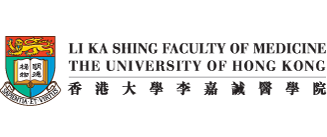Home > Tables & Figures
Tables & Figures
- Table 1.1 Top eight organisms isolated from different clinical specimens in 2016. Data from a regional hospital in HK
- Table 1.2 Intrinsic and associated resistance to antimicrobial agents among five nosocomial pathogens
- Table 1.3 Resistance of common bacterial isolates from all specimens in four regional hospitals (Kowloon, Hong Kong Island and the New Territories) in 2015
- Table 1.4 Estimates of microorganisms significantly associated with AMR, HK, 2013–2016
- Table 1.5 Interpretation of vancomycin susceptibility for staphylococci
- Table 1.6 Characteristics of vancomycin-resistant E. faecium CC17
- Table 1.7 Characteristics of ESBL and AmpC ß-lactamases
- Table 1.8 Different classes of carbapenemase
- Table 2.1 Methods to implement ASP in hospital setting
- Table 2.2 Core elements of outpatient ASP
- Table 3.1 Dosage table for vancomycin using creatinine clearance
- Table 3.2 Mechanisms of antifungal action
- Table 3.3 General patterns of antifungal susceptibility
- Table 3.4 Comparison of selected pharmacokinetic parameters for the azoles and caspofungin
- Table 3.5 A suggested scheme for systemic antifungal agents
- Table 3.6 Selected clinical trials conducted on licensed antifungals
- Table 4.1 Guidelines for empirical therapy
- Table 4.2 Severity grading of acute pancreatitis according to revised Atlanta criteria (2012)
- Table 4.3 Interpretation of penicillin susceptibility for S. pneumoniae
- Table 4.4 Comparative activities of commonly used ß-lactams against S. pneumoniae with different levels of penicillin susceptibility
- Table 5.1 Guidelines for known-pathogen therapy
- Table 6.1 Suggested initial dose and time to re-dose for selected antimicrobial agents used for surgical prophylaxis
- Table 6.2 Antimicrobial prophylaxis in clean operations
- Table 6.3 Antimicrobial prophylaxis in clean-contaminated operations
- Table 6.4 Antimicrobial prophylaxis in contaminated-infected operations
- Table 7.1 Preparation and recommended dosing regimens for antibiotics
- Table 7.2 Cost comparison of selected I.V and P.O. antibiotics
- Table 7.3 Cost comparison of systemic antifungal agents
- Table 7.4 Dosage of antimicrobial agents for central nervous system infections
- Table 7.5 Intra-peritoneal antibiotic dosing recommendations for patients with continuous ambulatory peritoneal dialysis peritonitis
- Table 8.1 Oral ß-lactam desensitisation protocol
- Table 8.2 Cross-reacting side chains between ß-lactam antibiotics
- Table 8.3 Risk of cross-reactivity between different ß-lactams
- Table 8.4 Key points in the use of UAT
- Table 8.5 TTP of blood culture of different organisms
- Table 8.6 Diagnosing CABSI by differential time to positivity
- Figure 1.1 Number of CA-MRSA reported to the CHP from 2007–2016.
- Figure 1.2 Burden for ESBL-producing E. coli bacteraemia in a regional hospital in HK.
- Figure 1.3 Number of carbapenemase-producing Enterobacteriaceae confirmed at the Public Health Laboratory Services Branch, CHP, 2009 to 2016.
- Figure 1.4 Changes in the multidrug-resistant rate of Acinetobacter baumannii according to three different definitions, 1997–2008
- Figure 1.5 Prevalence of Mycoplasma pneumoniae in respiratory specimens according to patient age groups, all HA hospitals, 2015–2016.
- Figure 2.1 Cue card for patient education
- Figure 3.1 Distribution by species for 595 episodes of fungaemia in HA, 2015–2016
- Figure 4.1 Management of pancreatic necrosis when infection is suspected
- Figure 4.2 Susceptibility of 775 invasive pneumococcal isolates to penicillin and cefotaxime according to patient age groups, 2012–2016, HK
- Figure 8.1 Flow chart on assessment of ß-lactam allergy
- Figure 8.2 ß-lactam skin testing













